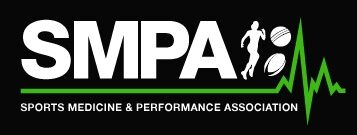FMPA Conference 2023 Programme
FMPA 2023 Conference Sponsor

Tea/Coffee
Please visit our trade exhibition
Welcome from the Football Medicine & Performance Association CEO, Eamonn Salmon.
PART 1
CLEAN-UP
This stage would include any aspects around trauma and acute injury management protocols to ensure no further harm is created and disruption to the diagnosis and prognosis period. It may include examples of pain and swelling management, early tissue remodelling etc
CONTROL / CLEAR
This stage would include any early methods to restore mobility and muscle function and bridging the gap between the treatment modalities and the gymnasium-based load integration. It may include aspects of interventions with hydrotherapy or bespoke equipment such as isokinetic dynamometry or isometric monitoring
CO-ORDINATION
This stage would include some of the early loading strategies, functional movement patterning, proprioception etc.
CHANGE OF DIRECTION (i)
This stage would involve some of the force absorption and production exercises and stabilisation training and the preceding pre-planned change of direction drills that would underpin agility-based movements
Football medical departments across the leagues are unique in terms of their organisation. This relies on a variety of internal and external factors that can influence the setup and therefore performance of a medical department. In this talk, Andrew will present on lessons learned from leaders in high performance setting across football, the NHS and other working environments that are transferrable in various football settings. This will include an overview of applying medical operational management in football.
CLEAN UP/CONTROL
Hamstring injuries in football remain burdensome, and are underpinned by high rates of re-injuries and subsequent injuries. In this talk, Fearghal will present a conceptual framework for the rehabilitation hamstring injuries – giving consideration to the injured structure, risk factors that may have caused the injuries and functional deficits following the injuries. This will involve an overview of the most relevant recent literature, and how this can be applied in a sporting setting.
Please visit our trade exhibition.
Injuries to the triceps surae have received significant attention in recent years.
This is primarily due to high injury rates, high recurrence rates and the significant time loss from competitive sport, not to mention the financial burden this represents to football clubs.
Sean will present a case study detailing the rehabilitation process following a complex calf injury, with a bias towards functional strength and mobility. This presentation will cover early management through to return to play and include injury classification systems, the staged rehabilitation process in this objective criteria driven process. This will all be underpinned by appropriate research in this quickly evolving field of Sports Medicine.
Development of functional strength through movement complexes offers a time, space and equipment efficient solution to a complex problem. Using a range of equipment the session looks at developing a 360 degree approach to loading. Easy to programme, prescription can progressed from ‘static to dynamic’, ‘slow to fast’, and ‘simple to complex’. Crucially exercise selection can be driven by a movement outcome to develop all areas of pillar strength.
Buffet lunch & refreshment
Please visit our trade exhibiton.
PART 2
CHANGE OF DIRECTION (ii)
This stage would involve some of the plyometric and dynamic stabilisation training and the progression from pre-planned change of direction drills to more reactive agility-based movements
CHASE & CONDITION
This stage includes any form of adding of external stimuli to promote faster speeds of movement drills and the accumulation of controlled high intensity running
COMPETE
This stage focusses on the re-integration requirements for training and the use of certain football specific drills that would assist with any players requiring modification to team training in their return to play phase
Demands of elite football are high, requiring performance and backroom staff to apply and execute appropriate rehabilitation to facilitate return to play. Players are required to perform high speed change of direction including accelerations and decelerations with a combined effort of intensities. In surveillance studies, it has been demonstrated that there can be more than 1300 changes of direction performed. The physical ability to change direction efficiently allows for marginal gains in competition that can be crucial in responding to the unpredictable game-environments. This includes when a team is in possession, out of possession or performing an efficient reaction response to opponents. These abilities to respond to internal and external loads/forces create game changing performances impacting on results! The importance of COD in rehabilitation is key in enforcing good movement strategies in pre-planned drills progressing to reactive agility-based drills facilitating the accels, decels and varied intensities.
As coaches, trainers, and therapists, we are constantly searching for ways to develop and maximise performance in the sporting arena. This allows us to limit injuries, optimize performance outcomes, and see the desired competition results we want. The ability to move well, as we know, can provide a key advantage to players towards the outcome of a game. How we develop speed mechanics to enhance agility in the applied everyday setting on the training ground can be done through effective coaching.
Practitioners are faced with a number of decision making and training design challenges when looking to enhance on pitch movement skills. It is often left to a simple replication of sporting situations or a repetition of mixed pre-planned movements to ensure physical exposure. The Multi-Directional Movement Skill Framework allows coaches to identify the key performance indicators for adaptable and multi-planar movement, and think about their training of transferable movement skill in a systematic manner.
Please visit our trade exhibition.
• In-season field and gym-based strength and power programmes in men’s professional football.
• How the match schedule affects frequency, intensity & volume of training.
• How programmes are individualised.
• Transfer from the gym to the pitch.
• Are training & games enough: Fatigue management vs. physical development?
• What is monitored and deemed meaningful.
• The criteria for returning to performance following an injury.
During this presentation, Scott will provide an overview of the latest Coerver® Coaching methodology and how Ball Mastery can be utilised to enhance Conditioning & Rehabilitation.











